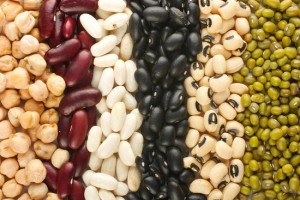Had a great time at the MTMIC Annual Conference as one of the speakers. My topic? “Living By Design 2017”. Met some great people, introduced to a great company with inspiring leadership, and had some great food (the asparagus was outstanding). I even got some feedback from a participant, that her husband had heard me speak at another conference, made some changes, and feels much better. I am so grateful for this day : )
MTMIC Annual Conference
My Vision: City of “A’s”
 I have recently been impressed on both the importance of purpose and vision, as well as the importance of writing it down. I will explain in sometime soon why, but for now I just wanted to capture mine. My vision and purpose is around creating Cities of A’s. So what does a City of A’s look like…
I have recently been impressed on both the importance of purpose and vision, as well as the importance of writing it down. I will explain in sometime soon why, but for now I just wanted to capture mine. My vision and purpose is around creating Cities of A’s. So what does a City of A’s look like…
Its a place were less than 80% have healthy weights (and not overburdened with diabetes and hypertension), were its residents are without the struggles of addiction to substances or alcohol, and there is regular interaction with the health professions for advice on prevention and health promotion rather than disease treatment.
Where families are whole, and regularly engaged in helpful conversations, in homes that are healthy, safe, uncluttered, and free from environmental hazards such as lead and radon. Where families are also financially fit, with the ability to honor their financial commitments, and the confidence to sustain themselves through any short period of financial challenge. Where families also walk with clarity about their passions and purpose, and with this clarity comes organization around priorities, and the ability to support themselves effectively should their be a natural disaster.
A place where people regularly invest in improving their knowledge and skills, able to address the needs of the time, and all with the ability to find a place where they can add value, and make contributions to our collective prosperity. The citizens make sure their environment is beautiful and clean, regularly recycling so that waste can be wisely managed. A place where the residents regularly interact with their political leadership to help insure that the policies developed distribute resources in fair and equitable manner.
Most importantly, a city of A’s is a place where the dominant conversations surround the potential of our future and the practices and products that can get us there, and not the futility and frustrations of our past. Where the residents live in harmony with their environment, consistently making helpful choices, full of vitality, regularly walking in love and forgiveness, always ready and willing to lend a hand to a neighbor in need.
That is what a city of A’s look like. Thats a place where I want to live, and I will expend every good breath I have to make that happen. I do have a plan, and pray that it is God’s plan for my life. Maybe you are a part of it. If so, drop me a line…
Wellness Survey Health Tip #3: Eat Beans, lots of them:)
 This week in the wellness survey, we focus on beans…
This week in the wellness survey, we focus on beans…
Of the respondents, the largest percentage only ate beans 1 per week and that was 27% of the group. 18% did not eat beans at all during the week. 14 people (10% of the group) ate beans 5 or more days per week.
The eating of beans CORRELATED POSITIVELY with other wellness behavior such as eating greens, onions, mushrooms, berries, and seeds; as consumption of beans go up you also ate more of these foods. It also CORRELATED NEGATIVELY with eating fried foods, and meat, that is as the bean conceptions goes up, the eating of meat and fried food tends to go down. The consumption of beans also correlated positively with physical activity, meaning that as you’re bean consumption when up you also tended to exercise more, stretch more and perform more strengthening exercises. Similar finding were found for the eating of greens as they also tended to be associated with what we would think of as good wellness behavior.
As for disease states there was a negative association between the consumption of beans and obesity, with a rate of obesity of 29% for those that do not eat beans and a rate of 7.4% for those that ate beans for 4 or more times per week.
In terms of disease trends, in contrast to meat, as the days of beans go up, the prevalence of most diseases (8 of the nine checked) tended to go down. The only one that did not was back pain Back Pain. This was difficult to interpret as the number that ate beans daily was very small. Overall, the people who at beans 5 or more times per week(14 of you), had no medical conditions, with the exception of one case of back pain.
Overall it would seem that, like greens, beans have a positive impact on health. Can’t say that its totally due to the beans as, eating beans is related to other good behavior. That being said, it was observed in the “Blue Zone Project (https://www.ted.com/talks/dan_buettner_how_to_live_to_be_100), that in the cultures that tend to have longevity, they do tend to eat a lot of beans, and less meat.
There are several reasons why beans maybe good; they have a good balance of carbs, proteins, and fats, 2) they have a good balance of omega 3:6, 3) they also tend to change the micro biome in the gut (bacteria in our intestines) in a healthy manner. So we should be eating beans on a regular, at least 5 days a week.
Some find that they have trouble with gas when they eat beans, which is my case. Many nutritional expert state that as you eat them your body gets better at digesting them. I have also found that soaking a cup of beans in a tsp of lemon juice tends to help. I’m still having a bit of gas thought (my apologies to my friends:)
Bottom Line: Beans are on the good list, and collectively we should be eating more of them. As the frequency goes up, there appears to be less chance of both depression, and obesity. Not sure if this is the beans, or as you eat more beans you do more healthy things in general (better diet, and more exercise), but we need not worry to much for the why, they are a cheep source of calories, and likely helping us. If you are going to start, introduce small amounts, perhaps a tablespoon at a meal, and increase over time. You can also try soaking beans for longer periods of time, and perhaps adding lemon juice to the soaking water. If you are a bean eater and found that you have had less trouble with gas over time, please do share your secrets, PLEASE, PLEASE, PLEASE 🙂
Hopefully you are finding the information helpful. See you next week : )
In Health,
-jb
Wellness Survey Update 3: When it comes to meat, less is more (better)
 We next take a look a the behavior of eating meat. The majority of those surveyed eat meat 4 or more times per week (75%), and 32% of those surveyed eat meat daily. Realize that even within these groups there can be a wide range of meat eaten, as I don’t ask if you have meat at every meal, so it is possible for those who eat less than seven days per weak to eat more meat overall than those who eat meat every day.
We next take a look a the behavior of eating meat. The majority of those surveyed eat meat 4 or more times per week (75%), and 32% of those surveyed eat meat daily. Realize that even within these groups there can be a wide range of meat eaten, as I don’t ask if you have meat at every meal, so it is possible for those who eat less than seven days per weak to eat more meat overall than those who eat meat every day.
I looked at 9 disease states and their relationship to meat consumption (overweight, obese, high blood pressure, diabetes, high cholesterol, asthma, arthritis, depression, and back pain). Of these only depression showed a dependent relationship, mean that they seem to influence each other. While the correlation was not thought to be statistically significant, the trend line suggested that as the amount of meat consumed increase, so did depression. I must state that in a survey like this, it can never prove causality, only relationship. That being said, for each of the disease states, as the days of week that meat is consume there was an overall increase in the disease state, as suggested by the trend line, with the exception of arthritis. At first glance this may seem odd, however animal sources of protein are high in glycine, which is a major component of cartilage and connective tissue. So meat may have some benefits, and again how the food is cooked may be important.
The finding here are consistent with the observations of “The Blue Zone” project that found that in cultures where people have a tendency to live well at the age of 100, they eat very little meat (but still eat meat). They tend to consume meat 1 to 3 times per week. More of their protein comes from beans (which I will talk about next week).
Recommendations? For those that eat meat at every meal, try to have some of the meals meatless. You may go from their to a couple of meatless days per week. For health reasons, I don’t think it is necessary to totally give up meat. In fact, some nutrients are hard to get if you don’t eat meat, like vitamin B12. Another strategy to decrease your meat consumption and get more health bang for you buck is to eat more stew. If there are bones on the meat that you use in your stew, this has the advantage of creating a bone broth, which some have found quite helpful in improving their health. Turns out that the proteins in the cartilage, skin, and bones is good for us. Also the lower processing temperatures of soup (compared to baking and frying), may preserve more the nutrients found in the meat.
If you make the change and feel better (or worse), let me know. Also if you have some good recipes to share for a good meat and vegetable stew, please share that as well.
Until next week…Godspeed.
-jb
Wellness Survey Update: Process Matters…
This post is a week late and for that I apologize but I have learned a lot in that period and in time will share. For todays post, the bottom line…
How you process your food matters… better to eat RAW (e.g. vegetable/fruit smoothies / green vegetable juices) or BOILED food (e.g. stews).
Looking further into the survey and green vegetables (which suggested that the more days you ate green, the fewer number of chronic conditions you had) I was unable to note any statistical relationship between the number of days that one consumes green vegetables and any of the specific chronic diseases that were surveyed. This surprised me. I have been thinking about why this may be the case, especially in light of the work and outcomes of Dr. Joel Fuhrman (YouTube him), who talks much about the importance of nutrient density. He makes the claim that the more nutrient dense your diet, the less disease you will have (including obesity). He also notes that the green leafy vegetables are the most nutrient dense foods that we can eat. I really believe this and have seen some remarkable results from people who juice a lot of greens regularly (weight loss, drop in blood pressure etc). So again, the results of the survey surprised me. Possible explanations;
1) there is no relationship (doubt this is the reason),
2) the survey does not quantify how many greens you eat, and even if eaten every day the amount may be over shadowed by the amount of meat, grains, sugar and other nutrient poor foods that we eat, or
3) the way that we process our foods may alter the food in a manner that the nutrients in them are less effective.
I think the real answer is in the last two, and especially the last one, how we process our food. I have been able to identify studies that demonstrate that when you cook food it can have a negative impact on food quality, with some nutrients declining by 70% depending on the methods (boiling, baking, frying, micro-waving) In many cases boiling appears less damaging, and microwaving the most damaging. So we can take a plate of food, pop it in the microwave, and get rid of 70% or more of some nutrients, lessening its health impact. Further if greens are combined with foods that are less nutrient dense (like oils and sugar, especially in salads), the negative effects of these less nutrient dense foods may further limit the benefits of the weakened greens.
Then what to do? There are three strategies to consider 1) make veggie/fruit smoothies; this allows you to eat your greens raw and you won’t be mixing them with the oils typically found in a salad dressing, 2) juice your greens; again you are eating raw, in greater amounts without the added oils 3) add a lot of greens to your stew; this will cook your vegetables at a lower temperature and destroy less of certain nutrients. The goal of these strategies is to get more nutrients per calorie in your meals. You can learn more about this by reviewing many of the YouTube presentations by Dr. Joel Fuhrman, or reading his book “Eat To Live”. I would also suggest that you have a look at the movie “Fat Sick and Nearly Dead” on Netflix. Let me know what you think 🙂 Hope this is helpful. See you next week.



